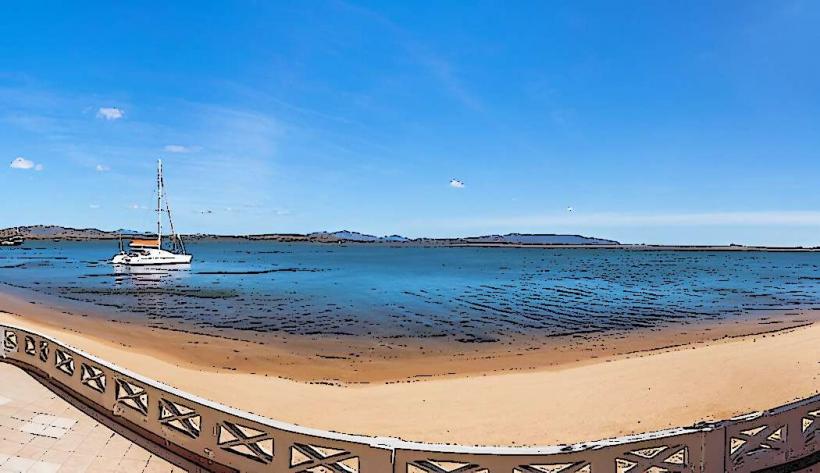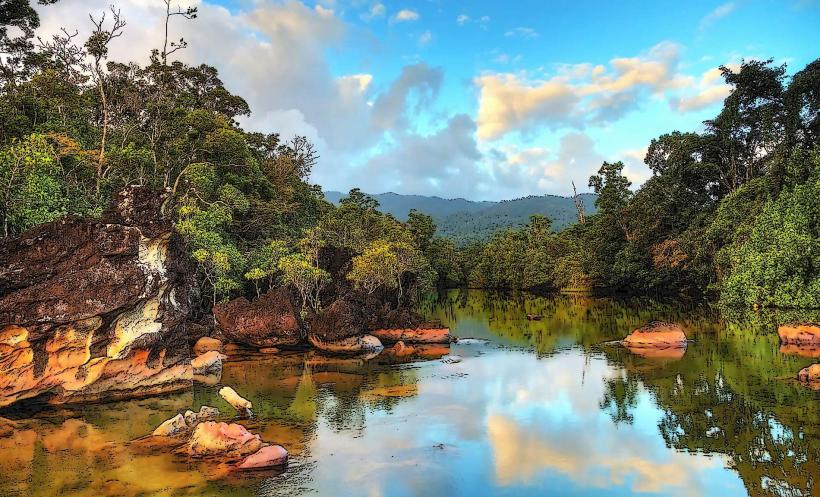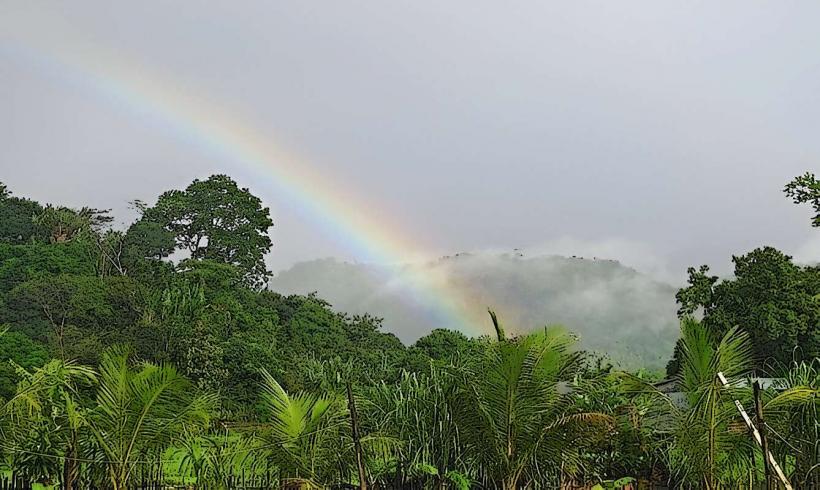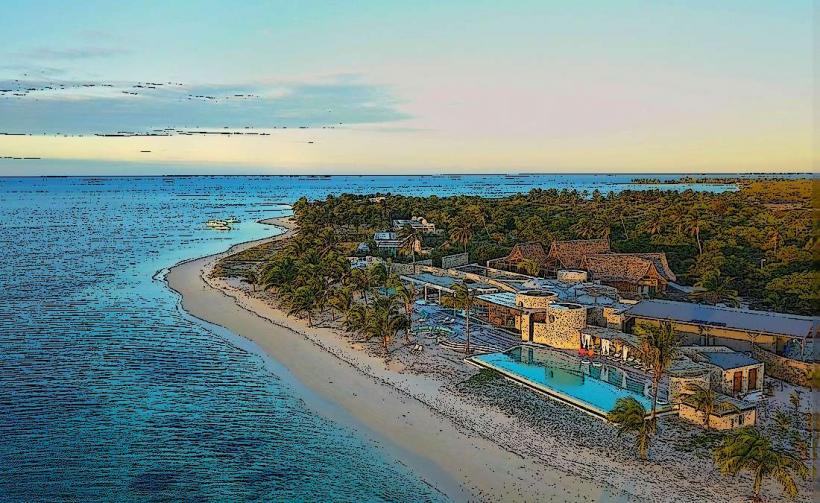Information
Landmark: Nosy Mangabe ReserveCity: Vohemar
Country: Madagascar
Continent: Africa
Nosy Mangabe Reserve is a small but ecologically significant island located off the northeastern coast of Madagascar, in the Indian Ocean. Situated near the mainland town of Maroantsetra, it is part of the larger Masoala National Park ecosystem and is known for its rich biodiversity, particularly as a haven for wildlife, including many endemic species. Here’s a detailed look at Nosy Mangabe Reserve:
1. Geography and Location:
Nosy Mangabe is an island of approximately 520 hectares (about 1,280 acres) in size. It is located about 2 kilometers (1.2 miles) off the northeastern coast of Madagascar, near the town of Maroantsetra in the Sava Region. The island is part of the Masoala Peninsula’s wider protected area and serves as an important conservation zone within the Masoala-Makira landscape. Nosy Mangabe is characterized by its dense tropical rainforest, surrounded by clear coastal waters that are rich in marine life.
2. Ecological Significance:
Nosy Mangabe is known for its exceptional biodiversity and serves as a critical area for both terrestrial and marine species. The island’s forests are home to a wide range of endemic species, and it plays a crucial role in preserving Madagascar’s unique flora and fauna. Some key ecological features include:
Rainforest Ecosystem: The island is covered with lush tropical rainforests, which are home to a variety of plant species, including several that are endemic to Madagascar. The island's biodiversity is particularly important as it serves as a refuge for species that are threatened or endangered elsewhere in the country.
Marine Ecosystems: The surrounding waters are rich in marine life, including coral reefs, which are important for both marine biodiversity and coastal protection. The island and its waters are also part of a marine protected area that ensures the conservation of marine species.
3. Wildlife and Flora:
Nosy Mangabe is particularly famous for its wildlife, much of which is endemic to Madagascar, meaning these species are found nowhere else in the world. Some notable species include:
Lemurs: The island is home to several lemur species, including the black-and-white ruffed lemur (Varecia variegata), which is critically endangered. This species is particularly significant because Nosy Mangabe is one of the few places where it can be found in the wild. The island also hosts the mouse lemur, one of the smallest primates in the world.
Frogs: Nosy Mangabe is a hotspot for endemic frog species, including the blue-legged leaf frog (Aglyptodactylus madagascariensis). These frogs are often brightly colored, and their populations are sensitive to habitat degradation and climate change.
Reptiles: The island hosts a variety of reptiles, including the Madagascar tree boa (Sanzinia madagascariensis) and various species of chameleons, which are famous for their ability to change colors. The diversity of reptiles is one of the key attractions for wildlife enthusiasts.
Birds: Birdwatchers can spot several bird species on the island, including the Madagascar crested ibis and blue vanga, both of which are endemic to Madagascar.
Flora: The island’s dense forests are home to a wide variety of endemic plant species, including rare orchids, trees, and shrubs. Many of these plants are crucial to the island’s delicate ecosystem, providing habitat and food for the wildlife.
4. Conservation Importance:
Nosy Mangabe is an important conservation site due to the high number of endemic species and its relatively undisturbed habitat. The island is part of Madagascar’s conservation efforts to protect its unique biodiversity. Key conservation features include:
Habitat Protection: As part of Masoala National Park, Nosy Mangabe is protected under Madagascar’s national laws. The reserve helps safeguard critical habitats for many endangered species.
Research and Education: Nosy Mangabe plays an important role in scientific research, offering opportunities for studying biodiversity, ecosystem interactions, and conservation strategies. Researchers from around the world visit the island to learn more about Madagascar’s ecosystems and its unique wildlife.
Sustainable Tourism: The island is also a destination for eco-tourism, allowing visitors to explore its diverse ecosystems while promoting conservation efforts. Guided tours are available for wildlife viewing, including lemur spotting and birdwatching.
5. Tourism and Activities:
Nosy Mangabe is accessible by boat from Maroantsetra, and visitors can explore the island’s rainforests, beaches, and marine environments. Activities typically include:
Wildlife Watching: Nosy Mangabe is famous for its biodiversity, and tourists often visit the island to spot lemurs, frogs, reptiles, and unique bird species. The black-and-white ruffed lemurs are one of the most sought-after animals to see.
Hiking and Trekking: Visitors can explore the island’s various hiking trails, which lead through the dense forest and offer opportunities to see wildlife and rare plants up close. Some trails also offer views of the surrounding coastline.
Snorkeling and Diving: The waters surrounding Nosy Mangabe are home to coral reefs, providing opportunities for snorkeling and diving. Marine life such as fish, sea turtles, and rays can be observed in the clear waters.
Cultural Interaction: Visitors to Nosy Mangabe often have the chance to learn about local Malagasy culture, as the nearby communities rely on sustainable practices that help preserve the island’s biodiversity.
6. Accessibility:
Nosy Mangabe is located about 2 kilometers (1.2 miles) from the town of Maroantsetra on the northeastern coast of Madagascar. To reach the island, visitors typically fly into Maroantsetra, which can be accessed by domestic flights from Antananarivo (the capital of Madagascar). From Maroantsetra, visitors can take a short boat ride to the island. Due to its remote location, travel to Nosy Mangabe requires some planning, but the island’s pristine environment makes the effort worthwhile.
7. Best Time to Visit:
The best time to visit Nosy Mangabe is during the dry season, from April to November. During this period, the weather is more favorable for hiking and wildlife watching. The wet season (December to March) can bring heavy rainfall, which may make the trails muddy and harder to navigate, although the lush greenery is especially vibrant during this time.
Conclusion:
Nosy Mangabe Reserve is a hidden gem in Madagascar’s rich tapestry of natural wonders. Its combination of dense rainforests, unique wildlife, and clear coastal waters makes it a crucial area for conservation and an exciting destination for eco-tourism. Whether you’re interested in wildlife watching, hiking, or exploring marine ecosystems, Nosy Mangabe offers an unforgettable experience in one of the world’s most biodiverse regions.






